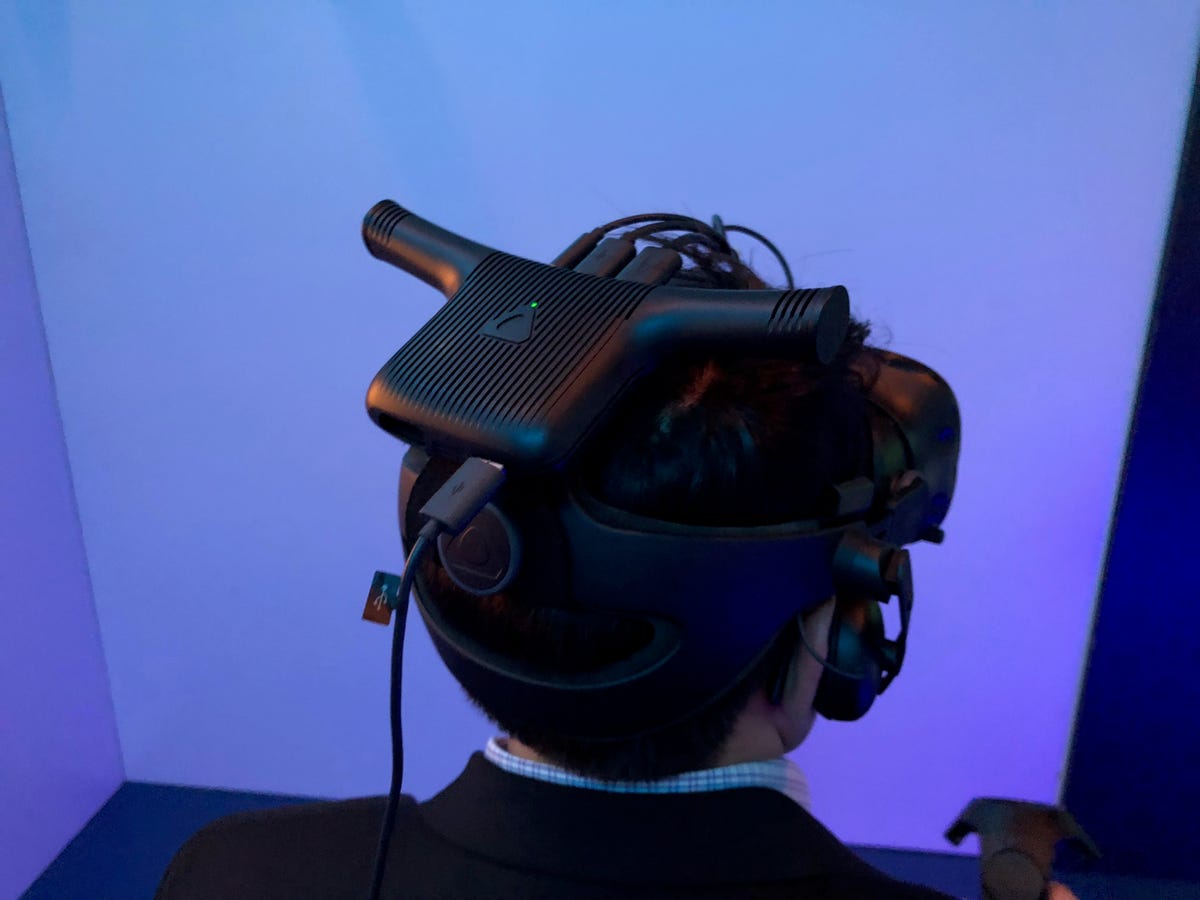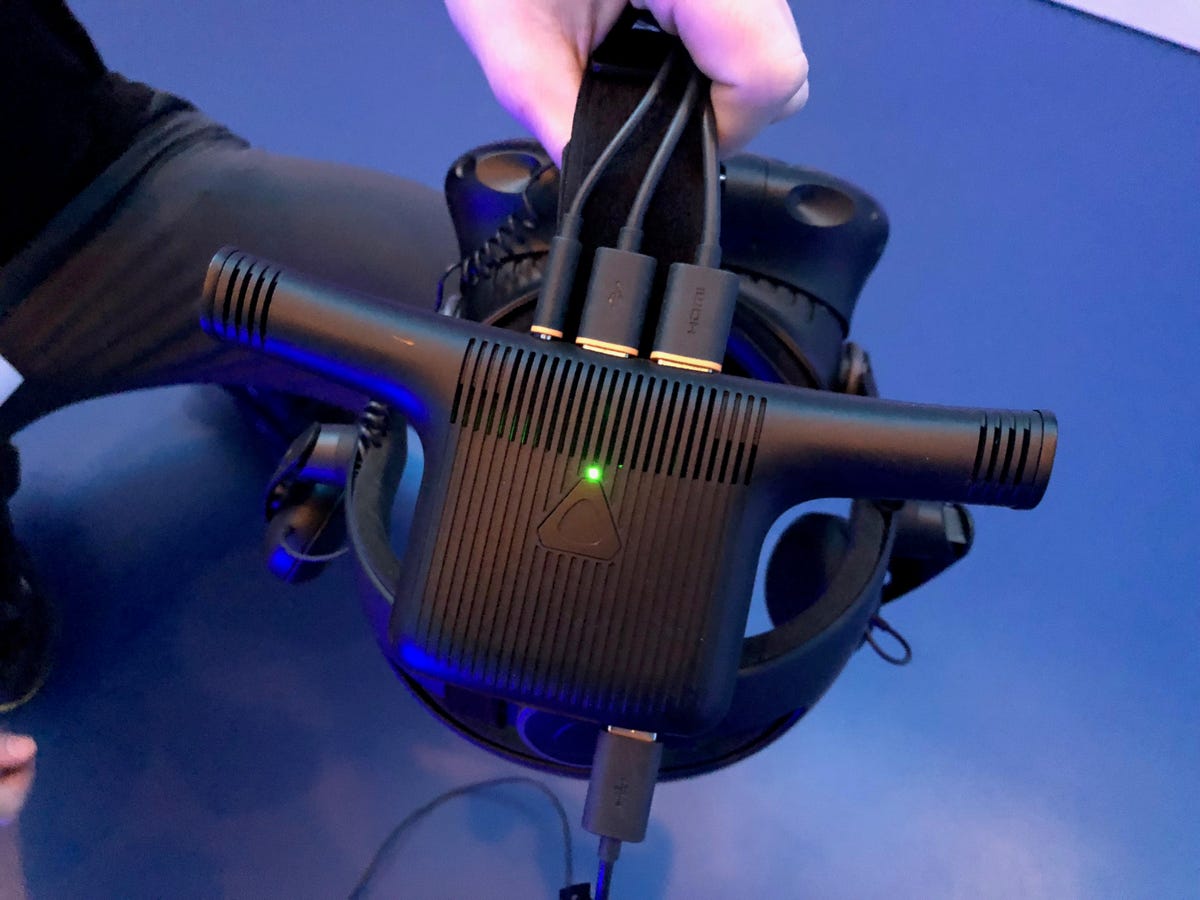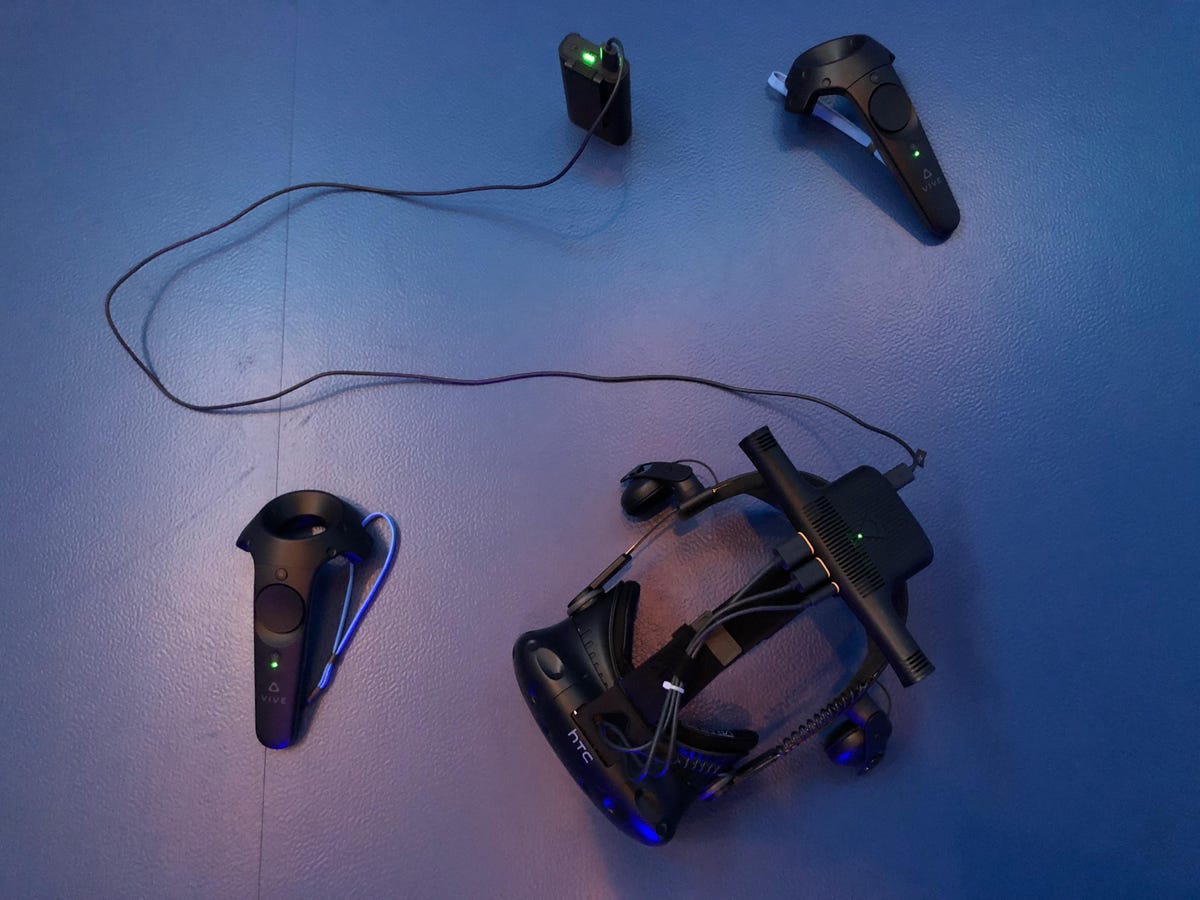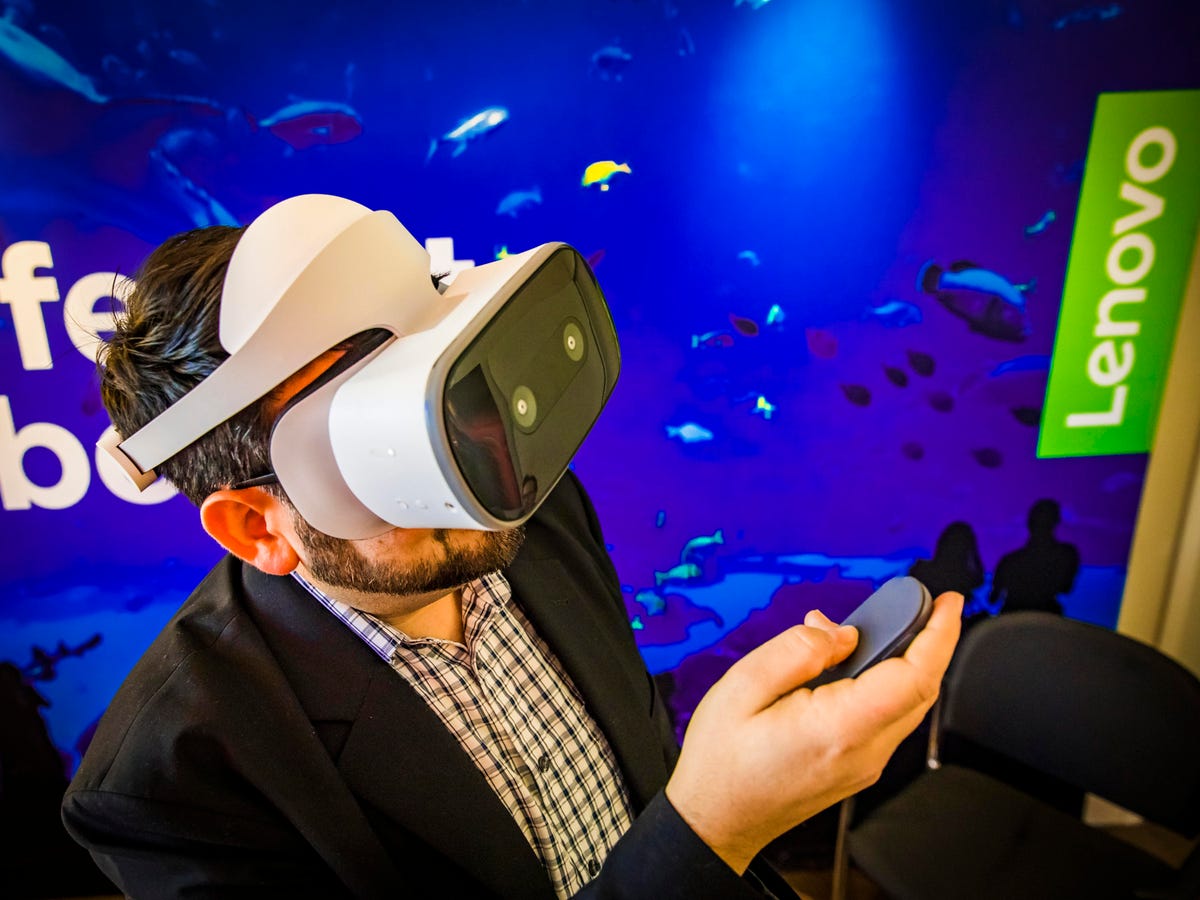If you fear trying virtual reality and getting tangled in cords, you’re in luck: 2018 could be your year. The last vestiges of tethered cables may finally be going away.
But being wireless isn’t the same thing as being hassle-free.
What’s the big deal about wireless VR, you ask? Maybe you have a phone-connected Gear VR, Daydream View or even Google Cardboard, which are already wireless and always have been. Sure, those are fine, but limited. The best VR experiences — the ones on higher-end PC and game consoles — have involved snaking thick cables to your equipment, and setting up room sensors, too. Microsoft’s VR headsets for Windows 10 released last year got rid of the room sensors, but the tethering cord — from the headset to the PC — remains.
Last year, I tried some early examples of wireless VR: some connected wirelessly to PCs, and others had all the hardware built-in to the headset. A year later, in 2018, it looks like the options will be better — and finally incorporated into consumer hardware you’ll actually be able to buy.
But, even though a world of more advanced, fully wireless VR is now closer than ever, there’s still a limit on how far it will take you.


Wearing the Vive and the new wireless adapter: It’s a lot of gear.
Scott Stein/CNET
Wireless PC VR: Learning to love the dongle
HTC is releasing its first wireless VR accessory, backwards-compatible with the original Vive headset or the upcoming Vive Pro, later this year. However, it’s not a PC-free VR experience.
The Vive wireless adapter is a way to play with VR wirelessly at home as long as there’s a PC nearby. This was already possible, in a sense, via an accessory made by TPCast for the Vive last year. But this new accessory promises to be better. It’s also the first consumer product with Intel’s WiGig technology that I’ve ever used.
WiGig has had me excited for years: It’s a super-high-bandwidth way to stream audio and video over short distances, and if it works as well as promised, it could mean a permanent goodbye to HDMI cables.


A look at the WiGig adapter from the top.
Scott Stein/CNET
Keep in mind, if you do use this wireless adapter, you’ll still need to set up AC-powered sensors at the corners of your VR room to track headset and controller movement. So, yes, this is “wireless,” at least in terms of your headset. But the room in which you’re using the Vive still needs to be rigged up to track motion properly, so it’s still setup-intensive, unlike Microsoft’s tethered but setup-minimal VR headsets that can track motion with no extra sensors needed.
I tried the wireless Vive adapter at HTC’s showcase of Vive tech in a hotel ballroom in Las Vegas, for just a handful of minutes. I played Doom VFR, Bethesda’s adaptation of Doom for Vive. I was free to move anywhere. Vive headset on, the extra clipped-on adapter on top added a bit of weight and bulk. The crazy antenna shape made me look even more like an alien. An extra power supply, resting in a clip-on box wired to the headset, clipped to my pants. There’s also a separate wireless dongle and adapter that plug into your PC.


The clip-on pack is part of the package.
Scott Stein/CNET
The wireless adapter means wearing that little clip-on for the battery and it means limited battery life before needing to recharge. It’s a tradeoff that’s going to happen with wireless. The only problem I foresee is, along with the controllers, the gear might become a lot to keep charging.
Like my 2017 CES demo using TPCast’s wireless VR adapter for the Vive, I could wander anywhere, walk freely in the area contained by light-emitting boxes you still need to attach to your walls to track movement. This should have made me feel unencumbered. Oddly, I still was afraid of tangling with phantom cables.
Games like Doom aren’t a great match for full wireless, either: Doom’s teleport-to-move game design on Vive VR means you can zap to places while staying still. I did that, and never found much of a need to walk around. Maybe new games need to be invented to take advantage of the extra freedom-of-movement true wireless offers.


Lenovo Mirage Solo: wireless, but in a different way.
James Martin/CNET
Mobile VR: Still a compromise
Mobile VR has always been wireless, but the more restricted features don’t match what high-end VR can do, and phones are still required… but not for long.
Truly wireless, self-contained VR lives in Lenovo’s Google Daydream-ready Mirage Solo headset, which runs off a Qualcomm Snapdragon processor but also has its own limited room-aware cameras that track motion to a small degree. The “inside out” tracking is all built-in, much like Microsoft’s mixed-reality VR headsets. The Vive, Oculus Rift and PlayStation VR currently lack this tech and need extra wired boxes or sensors to handle tracking. But you can’t walk very far.
Mirage Solo has nothing to set up, and works much like an Android phone in one of Google’s Daydream View VR goggles. A simple handheld remote does all the navigating. It’s effective, but nowhere near as advanced as what PC VR like the Vive can offer.
The Mirage Solo’s freedom of motion has limits, too. I could lean and duck and turn, but not too much. These types of mobile setups are going to advance quickly: They could end up challenging PC-connected VR, and eventually replacing it. Oculus has a fully self-contained wireless high-end VR product, code-named Santa Cruz, that’s still in development. And the company’s all-in-one mobile solution, the Oculus Go, is coming this year for just $199, or roughly £150 or AU$255 converted.
Coming next: Not tripping over your coffee table
Being untethered is one thing, but seeing what’s around you and not tripping over stuff is another. HTC Vive’s headset has limited room awareness for things like furniture, but companies like Occipital are dreaming of ways to mix full-room tracking into VR. That might not come right away, but it’ll be essential for longer-range VR walkabouts.
Whether wireless VR becomes amazing enough to make wireless worth the extra cost and effort remains to be seen. But I could get used to having this extra virtual freedom in actual VR. That’s if the apps are there to make it worthwhile and the hardware isn’t so bulky. But let’s see what actually gets released later this year.



